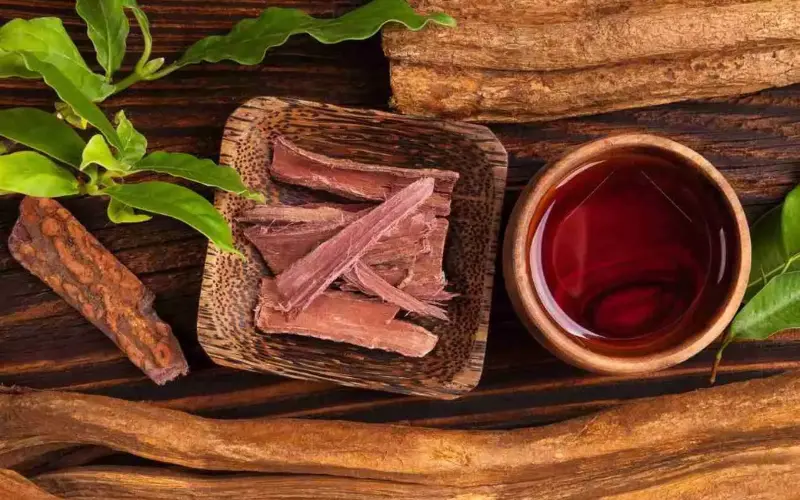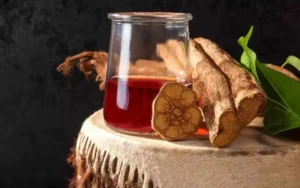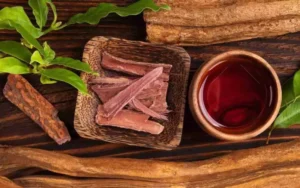Mimosa hostilis, also popularly known as Mimosa tenuiflora, is one of those resources that the inhabitants of the territories where it grows have known how to take advantage of, so that the uses that have been discovered over time have been integrated into the culture of the populations that enjoyed and continue to enjoy its benefits and utilities.
Within each country, throughout history, its cultural heritage has evolved with a large number of customs and traditions that maintain the identity of its culture engraved in its imprint. This means that each of these regions has taken advantage of the resources offered by their lands in different ways over the years.
in this article we will explore the mimosa hostilis uses, how many applications it can have and in what form, in which countries it is used and what are its types of preparation.
What is the bark of Mimosa Hostilis?
Mimosa tenuiflora, which is also synonymous with mimosa hostilis, is a species of thorny tree with reddish-brown bark that reaches 4 to 6 meters in height and grows throughout the Americas. It also goes by the names of:
- Jurema
- Jurema preta
- Catinga
- Tepezcohuite
This varies depending on the region.
It is a species whose natural distribution is found in several areas of Mexico, Honduras, Venezuela, El Salvador, Panama, Colombia and Brazil. Its bark is used differently in each of these countries, as it has various properties within the contents of its root and can serve multiple purposes and needs.
Mimosa Hostilis Uses
Traditional Medicinal Uses
In Mexico and Central America, the bark of Mimosa hostilis (also known as tepezcohuite) has been used for centuries to treat burns and skin lesions.
Modern clinical studies confirmed a 92% decrease in the size of venous ulcers after 8 weeks of topical application of standardized 5% bark extract.
Cosmetic and Skincare Applications
The aqueous or powdered extract is currently used in cosmetic products for its antioxidant, moisturizing and anti-aging properties. Flavonoids, tannins and lipids promote cell regeneration and improve skin texture and firmness.
Natural Dye and Leather Tanning
Thanks to its high tannin content (around 15 % or more), MHRB bark is highly valued for purple, red or brown dyeing of textiles and sustainable leather.
Mimosa hostilis uses around the world

Its most popular uses change within each region in which it is found and therefore it is preferable to show each of the uses given to the bark in the different places where its characteristics are exploited.
Mexico
It is said that the curative use of mimosa hostilis became popular in Mexico in the 1980s, although it was already being used and its application was rooted in traditional recipes. Its uses are quite varied within the Mexican territory, ranging from being used as a construction material for fences to protect crops and as firewood, to cure burns, skin problems or other conditions.
The properties of the root of mimosa hostilis allow to accelerate the healing of affected areas of the skin due to wounds or burns. It is also capable of treating skin conditions such as fungus, blemishes, wrinkles and pimples. On the other hand, it also serves to combat hair loss, and even treat vaginal itching or inflammation and slow down skin aging.
Central America
In these regions the agro-forestry use of the bark of the tree stands out. In El Salvador and Honduras its wood is widely used as fuel and has been called black charcoal. In certain parts of El Salvador its use as firewood is preferred over other plants, since mimosa hostilis is more abundant and produces greater quantities of charcoal. It is also used to make construction material or as animal fodder.
On the other hand, in El Salvador the root extract is also widely used as a liquid that helps in the healing of peptic ulcers or to treat dental problems.
Brazil
In Brazil the mimosa tenuiflora tree is better known by the name jurema. Several indigenous groups of the territory use its bark for rituals and it is considered by these same groups as a sacred plant to which they have enormous respect. However, its religious use is not the only one, since in other areas it is used as fuel or construction material.

Mimosa Hostilis bark preparations
We already know that the bark of mimosa hostilis is multipurpose and what it is used for in the healing area, but not how it is applied. The recipes may be different depending on the purpose for which the root extract is intended:
- For skin pimples: prepare an infusion with a piece of mimosa hostilis and copalchi in half a liter of water and apply on the skin for 10 to 15 minutes.
- For wounds or burns: the bark of the tree is boiled for 10 or 15 minutes and then applied as a fomentation on the affected area, although the wounds are also washed with the warm infusion.
- For intimate use in women: with the boiled bark, it is used to give external washes in intimate areas and treat vaginal itching and irritation.
In summary, Mimosa Hostilis has many different uses all over the world. However, many of these different uses involve using the root bark of the tree for different medicinal application involving the treatment of many different skin conditions.
Precautions and toxicity
Although Mimosa hostilis is widely valued for its medicinal, cosmetic and ecological properties, it is important to consider certain safety and toxicity issues before use, especially if used outside of traditional contexts.
Internal use not recommended without supervision
Oral consumption of extracts, infusions or preparations derived from the root or bark is not recommended without the guidance of an experienced health professional or ethnobotanist. The bark contains alkaloids such as DMT, which can have potent psychoactive effects if extracted in a concentrated manner.
Pregnancy and lactation
There are no conclusive studies that support the safety of the use of Mimosa hostilis during pregnancy or lactation. Due to its intense biological activity and the active compounds it contains, it is best to avoid any form of use during these periods.
Topical application: patch test
Although it is considered safe for most people when applied to the skin, it is advisable to perform a patch test prior to topical use, especially on sensitive skin or skin with previous dermatological conditions such as dermatitis or psoriasis.
Toxicity of seeds
Mimosa hostilis seeds contain toxic compounds and should not be ingested. Their use is strictly limited to botanical propagation and they have no direct medicinal or cosmetic applications.

Frequently Asked Questions
What is Mimosa hostilis used for?
Mimosa hostilis is used to treat burns, scars, skin conditions, as a natural dye, in natural cosmetics and in ritual cultural contexts.
Are mimosa hostilis and tepezcohuite the same thing?
Yes, tepezcohuite is the common name in Mexico for Mimosa hostilis or Mimosa tenuiflora, especially used for its dermatological benefits.
Can I apply Mimosa hostilis directly to the skin?
Yes, in the form of powder, extract or infusion, provided it has been properly processed. It is recommended to do a patch test beforehand.
What are the benefits of Mimosa hostilis for the skin?
It regenerates tissues, reduces blemishes and wrinkles, accelerates healing and fights infections thanks to its antioxidants, tannins and flavonoids.
Does it have side effects?
It is generally well tolerated in topical use. It should not be ingested without supervision, and should be avoided in pregnant women or people with highly reactive skin.












